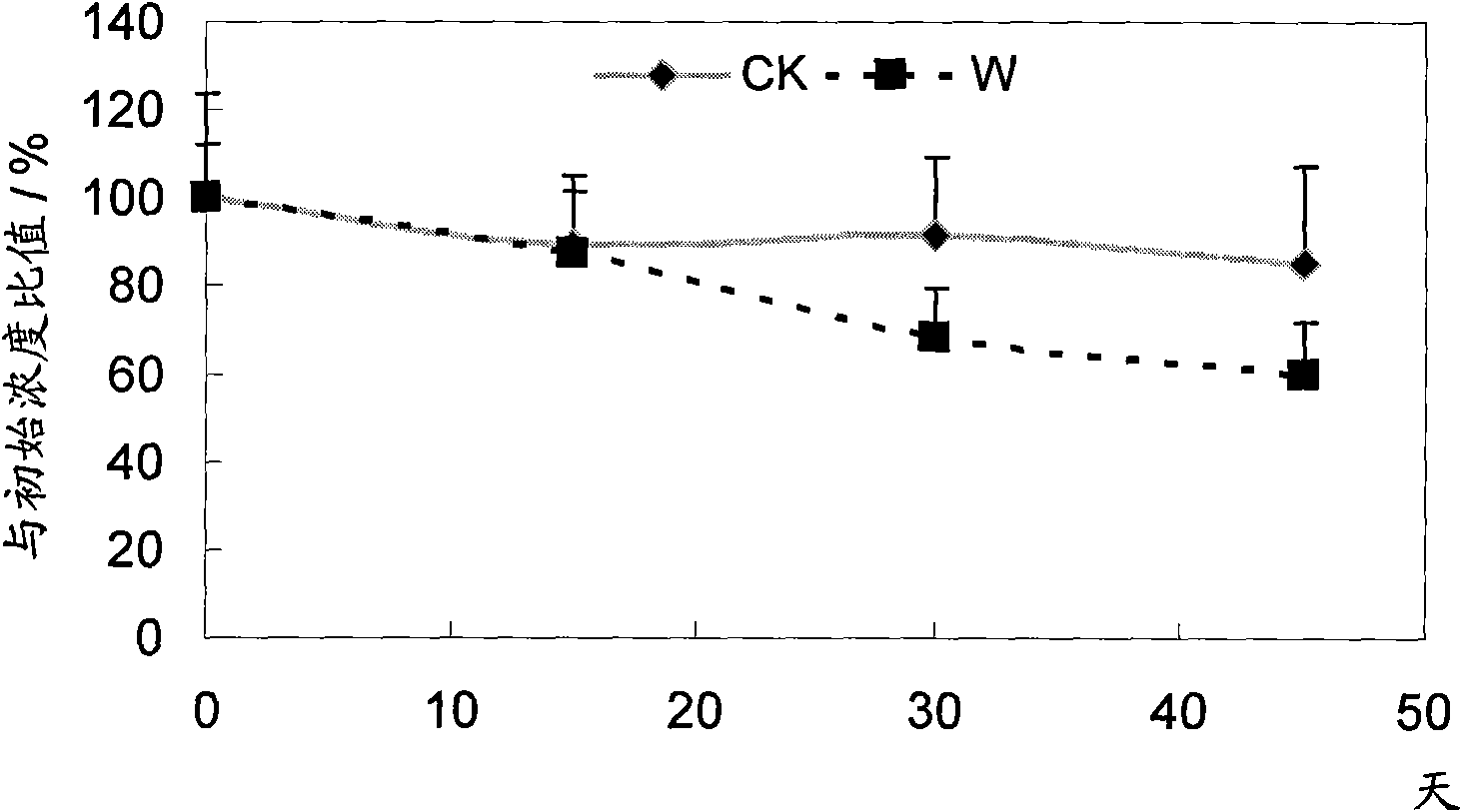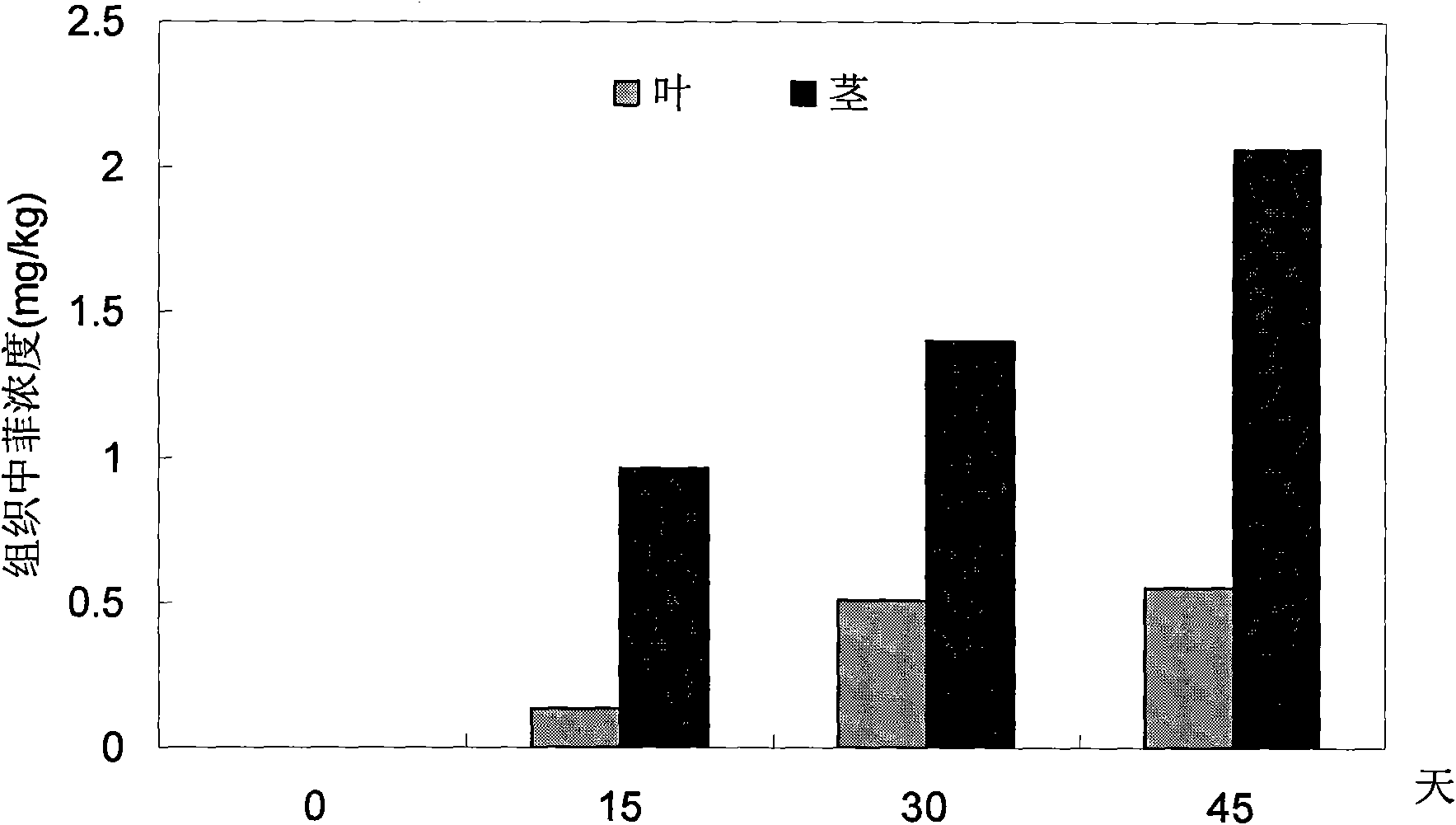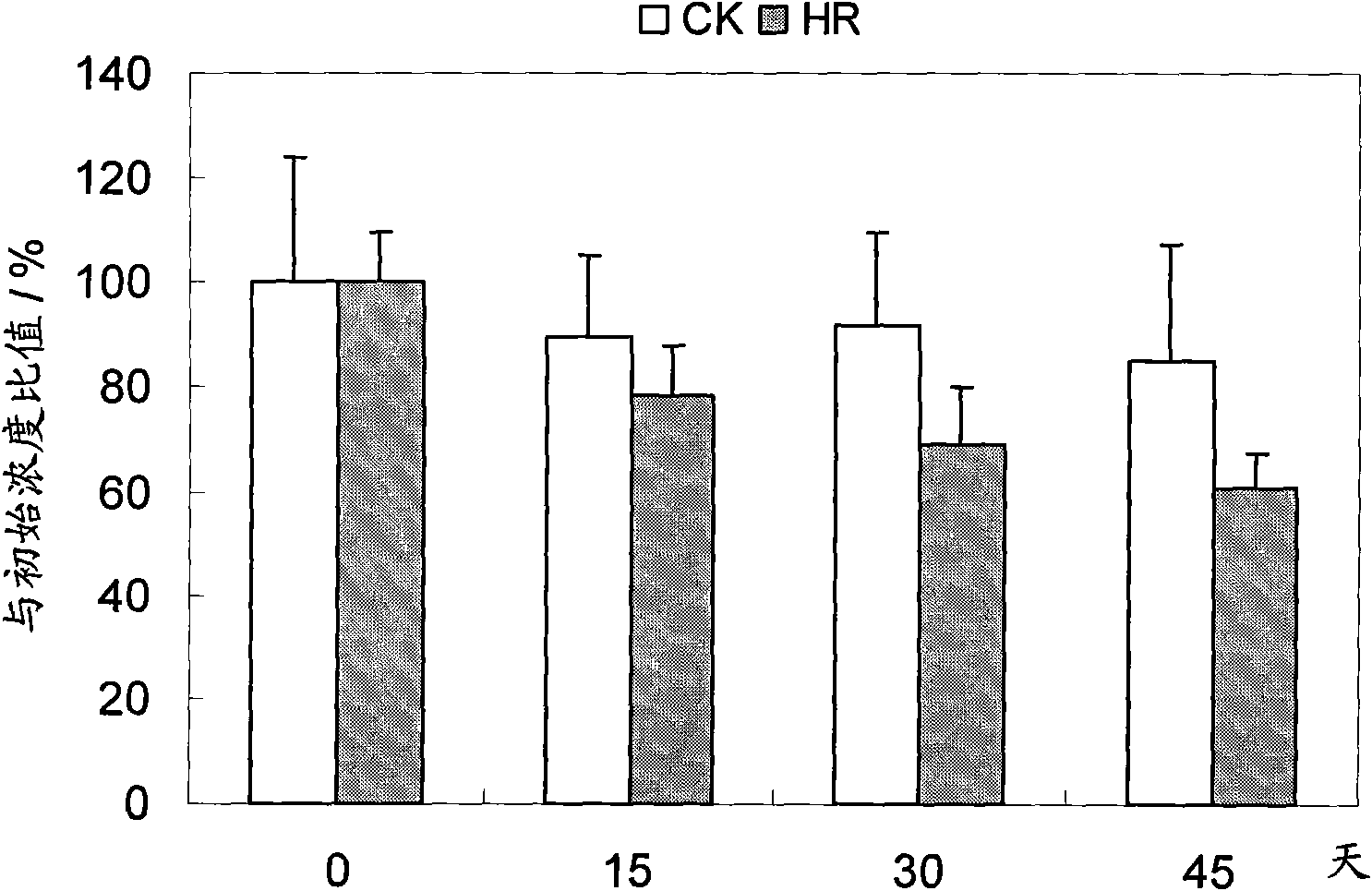Plant repair method of soil polluted by phenanthrene, pyrene or pentachlorophenol
A kind of technology of pentachlorophenol and polluted soil, applied in the field of soil pollution control
- Summary
- Abstract
- Description
- Claims
- Application Information
AI Technical Summary
Problems solved by technology
Method used
Image
Examples
Embodiment 1
[0029] In situ phytoremediation of polycyclic aromatic hydrocarbon phenanthrene-contaminated soil
[0030] The repair test site is located in a town in Jiangning District, Nanjing City. During the test, 200m was dug out first 2 For the soil in the rectangular plot, build a test pond and a collection system for infiltration water, then backfill the soil, backfill in layers when backfilling the topsoil, and sprinkle the solution of polycyclic aromatic hydrocarbon phenanthrene evenly in layers. After mixing evenly, level the land and break down the large pieces of soil on the surface. Then use PVC partitions to separate into several 1×1m 2 The square plot, the clapboard is buried at a depth of 25cm. Every 3 adjacent cells is a group of parallel. The planting plant was Weeping Willow J1011. When the planting density was 5 mg phenanthrene / kg soil, 5 plants were planted per square meter (100 plants / 100 mg phenanthrene / kg soil). The planting time was 3 days after the pollution tr...
Embodiment 2
[0033] In situ phytoremediation of polycyclic aromatic hydrocarbon pyrene-contaminated soil
[0034] Its basic steps are the same as embodiment 1, except that when the planting density of weeping willow is 50mg pyrene / kg soil, every square meter is planted 5 strains (500 strains / every 100mg pyrene / kg soil), and the treatment group has: soil control group, weeping willow group and horseradish group, denoted as CK, W and HR, respectively. Figure 4 The time-dependent changes of pyrene concentration in soil under Weeping willow planting treatments are given. It can be seen from the figure that after the treatment started, the decrease of the pyrene concentration in the soil under the W treatment was significantly different from that of the CK control group (p Figure 5 It can be seen that the deep-rooted plant horseradish is a perennial cruciferous vegetatively propagated deep-rooted nodule plant, and its planting method is to bury the fleshy roots separately, and the planting den...
Embodiment 3
[0036] In situ phytoremediation of pentachlorophenol-contaminated soil
[0037] Its basic steps are the same as Example 1, except that the planting density of weeping willow is when 1mg PCP / kg soil is planted 5 strains (10 strains / every 100mg PCP / kg soil) treatment groups in every square meter: soil control group, Weeping willow group and horseradish group were recorded as CK, W and HR, respectively. For the horseradish group, depending on the amount of horseradish added, 50, 100 or 200g / m 2 The difference is recorded as HR50, HR100 and HR200 respectively.
[0038] Image 6 The changes of PCP concentration in soil from the time of treatment under the weeping willow planting are given. It can be seen from the figure that from the beginning of the treatment, the planting of weeping willow promoted the decrease of the PCP concentration in the soil, and the decrease of the PCP concentration in the soil under the W treatment was significantly different from that of the CK contro...
PUM
| Property | Measurement | Unit |
|---|---|---|
| Density | aaaaa | aaaaa |
| Density | aaaaa | aaaaa |
Abstract
Description
Claims
Application Information
 Login to View More
Login to View More - R&D
- Intellectual Property
- Life Sciences
- Materials
- Tech Scout
- Unparalleled Data Quality
- Higher Quality Content
- 60% Fewer Hallucinations
Browse by: Latest US Patents, China's latest patents, Technical Efficacy Thesaurus, Application Domain, Technology Topic, Popular Technical Reports.
© 2025 PatSnap. All rights reserved.Legal|Privacy policy|Modern Slavery Act Transparency Statement|Sitemap|About US| Contact US: help@patsnap.com



